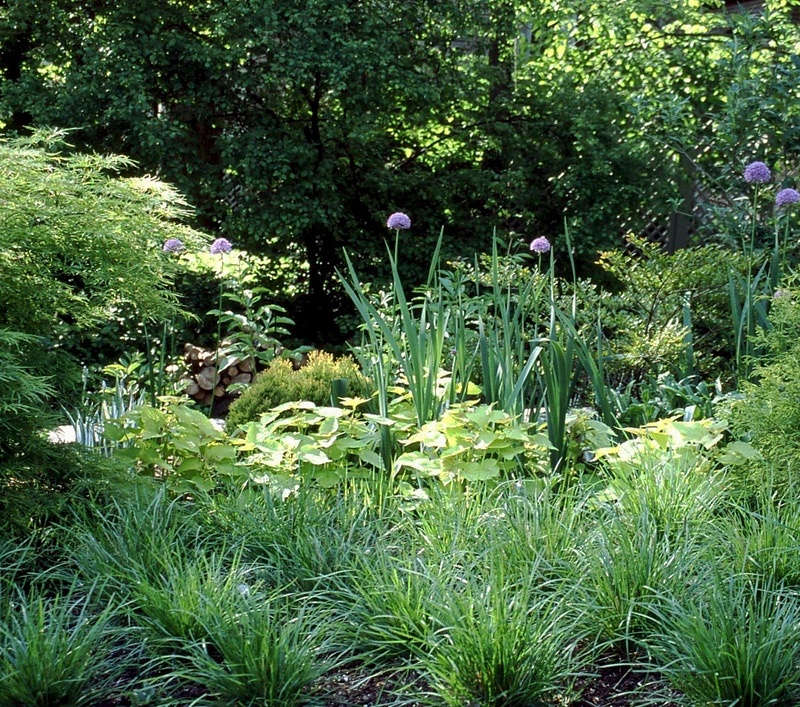

Ornamental evergreen moor grass (Sesleria) is a cool-season grower which can adapt to rocky, drought-prone, and alkaline conditions to thrive as happily in a meadow garden or flower border.
Moor grass (Sesleria) is an evergreen perennial that grows in well-behaved clumps and can be a savior in a landscape—as an edging plant, a ground cover, an accent to complement flowering perennials, or a punctuation point in a meadow garden.
Dutch garden design Piet Oudolf, known for his matrix planting schemes that repeat three or more perennials to create a cohesive meadow garden, uses Sesleria to create a backdrop or frame for such bright purple flowers as Salvias and Alliums. With more than two dozen species native to southern Europe’s grasslands, meadows, and highlands, moor grass is amenable to a wide variety of growing conditions, ranging from dry to semi-wet soil and light conditions from shaded to full sun (it will appreciate protection in hot, inland gardens).
“Perhaps no other genus of pure grasses offers as many beautiful choices for meadow plantings” as Sesleria, writes ornamental grasses expert John Greenlee in The American Meadow Garden. Among Greenlee’s (and our) favorite varieties is low-growing autumn moor grass (S. autumnalis), which has yellow-ish foliage and which is “never messy, and always attractive.”
More diminutive, blue moor grass (S. caerulea) reaches a height of 8 inches at maturity and can be planted en masse to create a lawn effect without the use of water-hogging turf. Gray moor grass (S. nitida) “makes a fine silvery ground cover as well as a flowering accent” with distinctive black blossoms in springtime,” notes Greenlee.
In a meadow garden, you can plant clumps of Sesleria among drifts of fescues (Festuca) and sedges (Carex) to create interesting textures and a long season of interest. For inspiration, see our post Garden Visit: A Backyard Meadow in Mill Valley, CA.